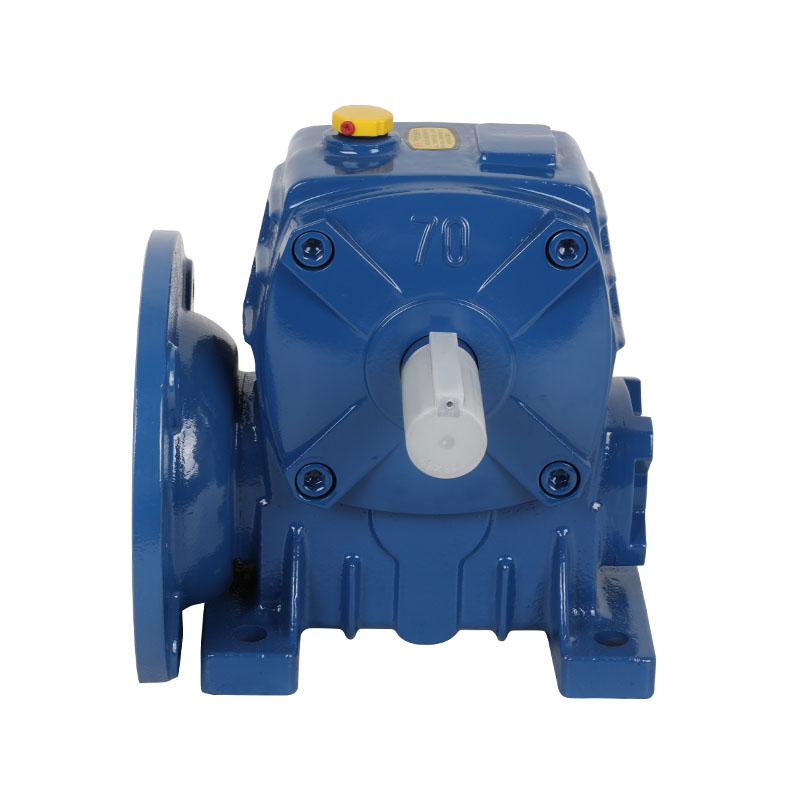The WP Worm Gear Reducer manages the heat generated during operation through cooling systems that enhance its thermal management. The cooling system, typically implemented in more demanding applications, functions to prevent overheating and extend the lifespan of the reducer. Here's how it works:
The cast iron or aluminum housing is often designed with ribs or fins to increase the surface area. This design promotes passive cooling by allowing air to flow over the surface, enhancing natural convection.
Material Conductivity: The material of the housing (usually metal) aids in conducting heat away from the internal components, allowing the gear reducer to radiate heat into the surrounding environment.
In applications where passive cooling isn't sufficient, cooling fans may be installed on or near the gear reducer. These fans help increase airflow around the reducer, speeding up the dissipation of heat.
Airflow Optimization: The use of fans ensures that air moves consistently over the housing, preventing hot air from stagnating around the unit and allowing cooler air to replace it.
WP worm gear reducers often use circulating oil or grease to manage heat. The lubricant not only reduces friction between the worm and the wheel but also helps carry heat away from these contact points.
Heat Transfer in Oil: The heat generated is absorbed by the lubricant and dissipated as the oil circulates through the gearbox. In some designs, an external oil cooler may be used to further cool the lubricant before it recirculates into the gear reducer.
In heavy-duty or industrial settings, a water cooling system can be integrated into the reducer. Water jackets or channels may be built into the housing to allow water to flow through, absorbing heat from the gearbox.Heat exchangers can be used to transfer heat from the water to the external environment, ensuring that the gear reducer maintains optimal operating temperatures even in high-load conditions.

Some advanced WP worm gear reducers include temperature sensors that monitor the internal temperature. These sensors trigger alarms or cooling system activations if the unit approaches unsafe temperature limits.In conjunction with temperature monitoring, cooling systems (fans or water cooling) may automatically activate when the unit reaches certain temperature thresholds, ensuring continuous management of heat.
Adequate ventilation around the gear reducer is critical to its cooling system’s effectiveness. Ensuring that the unit is installed with sufficient space for airflow helps manage the ambient temperature.Placing the gear reducer away from other heat-generating equipment helps avoid heat accumulation and allows the cooling system to work more efficiently.
By utilizing these cooling mechanisms, the WP Worm Gear Reducer is capable of managing the heat generated during its operation, ensuring stable performance, preventing overheating, and extending the life of the reducer.

 English
English русский
русский bahasa Indonesia
bahasa Indonesia
